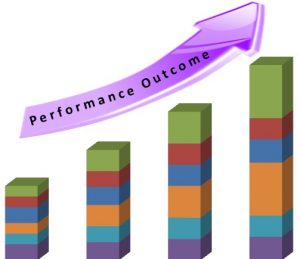When most organizations had hierarchical, top-down, command-and-control structures as their primary decision-making method, feedback was paramount. Information mostly needed to cascade downward in an organization, and the primary role of managers was to hold people accountable.
Today, as leaders know, the workplace is radically different. Modern organizations are more decentralized, matrixed and agile. Employees have greater autonomy and are required to be creative in how work gets done.
This means managers can’t just give employees feedback about what they did “right” or “wrong.” They must listen, ask questions, gain context and create a two-way dialogue.

Practice of Management
The practice of management is far too complex for a simple rubric to transform how employees perform and develop. And there has never been a one-page checklist that can turn a bad manager into a good one.
Effective management requires managers to help employees prioritize multiple projects, shift deadlines, remove barriers and manage interpersonal challenges. There’s hardly ever a single “perfect answer” to modern business problems.
In many professional situations, a successful outcome is based on emotional factors:
- how a customer feels after interacting with you
- And how a team feels about a new initiative
- how a vendor feels about partnering with you
“Feedback” rarely makes sense in these situations. What you really want is an open, honest, two-way dialogue that strengthens relationships rather than one-way instruction and criticism.
To put it simply, traditional feedback is one direction (manager to employee), episodic (i.e., infrequent and isolated) and focused on past mistakes that can’t be fixed.
Coaching conversations, on the other hand, are about now and what’s next. Coaching conversations put the employee’s strengths and future potential at the center, in an ongoing, middle-of-the-action dialogue.
Effective management requires managers to help employees prioritize multiple projects, shift deadlines, remove barriers and manage interpersonal challenges. There’s hardly ever a single perfect answer to modern business problems.
How to Build a Culture of High Performance
Step 1: Shift from critic to ally.
So how can you clearly communicate that you’re an ally and not a critic? Here’s a three-step formula:
- Empathize. If they’re struggling, acknowledge how hard or frustrating or annoying or painful that must be.
- Express confidence. Let them know you believe in their ability to handle the challenge they’re facing.
- Ask permission. Ask them if they would be willing to think with you about the situation

Step 2: Identify an energizing outcome.
Once they’ve said “yes,” it’s tempting to go back into the problem — the frustrating past. (“Let’s talk about that disruptive team member.”) But don’t go there. Not yet.
Instead, focus on the energizing future they want to create. One that is bigger than their problem. Ask them: “What is the outcome you’re going for?” Allow them to articulate what they’re trying to achieve, for themselves and for the organization. (“I’d love to create a high-performing team, one in which we communicate, collaborate, and even conflict, productively.”) Help them get to an outcome that is positive, clear, and meaningful.

Step 3: Discover a hidden opportunity.
When you’re both clear about the outcome they want, then you can revisit the problem. But this time, instead of trying to “solve” it, you’re asking, “How can this problem help us achieve the energizing outcome?” How might it be a good thing? A chance to practice a new behavior in service of an important value or goal? An opportunity to address a larger issue that underlies this one?
In the case of our struggling team leader, after some brainstorming, you may discover that the person characterized as “disruptive” is actually the only one on the team willing to engage in conflict to raise important issues.
Without them, elephants in the room remain unaddressed. In other words, with a little coaching on style, the disruptive person can be the key to the team’s high performance.

Step 4: Create a level-10 plan.
In this step, you guide them to brainstorm ways of capitalizing on that opportunity, and choosing and committing to a plan of action to achieve it. The term “level-10” plan means that when we ask, “On a scale of 1-10, how confident are you that you will execute this plan?,” the answer is a resounding 10.
Our struggling leader’s level-10 plan could be scheduling a conversation with the disruptive team member, as an ally, in order to help them contribute positively to the team.
What’s important isn’t that the plan succeeds, but that they follow through on taking a new action, assessing the results, and continually moving forward.












